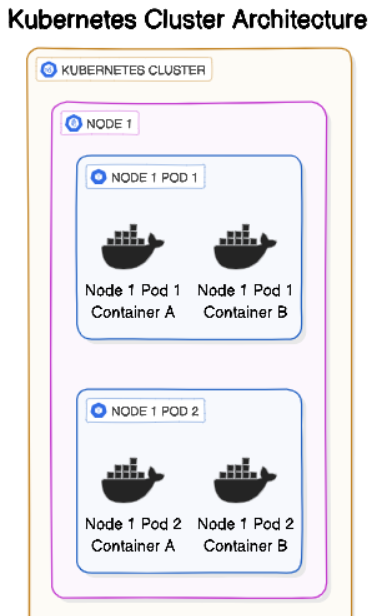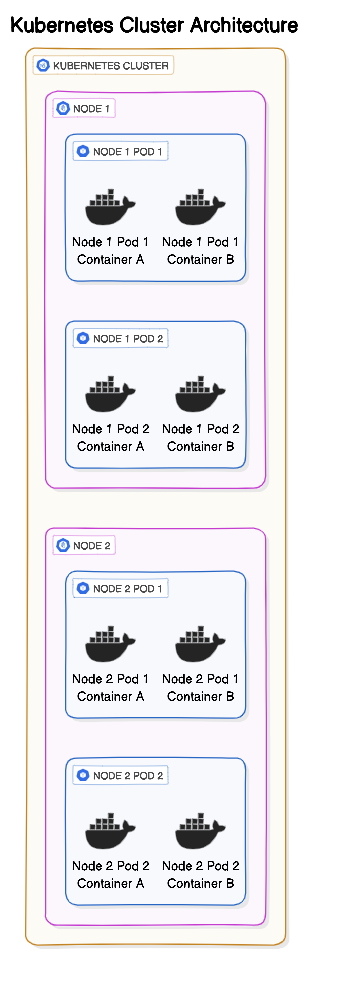Kubernetes Commands
Automates
- Deployment of containers
- Scaling of containers
- Maintenance of containers


Minikube
brew install minikube
Start/shutdown the cluster
minikube start
minikube stop # Saves the state
minikube delete # Deletes everything
Dashboard
minikube dashboard
Create a namespace
kubectl create ns non-prod
Shell redirection to connect to a Pod
kubectl exec -it new-nginx -- /bin/bash
Access from Another Pod
use a temporary pod to check if the application is reachable from within the cluster
-
-i -tflag Allows us to provide input to the containerkubectl run -it --rm --restart=Never busybox --image=busybox -- sh
Then, inside the busybox shell, try to curl your application:
wget -qO- http://<your-pod-ip>:<port-number>/actuator/health
wget -qO- http://10.109.198.72:5000/actuator/health
Debugs & Checks
use autocomplete (for GCP Cloud shell)
source <(kubectl completion bash)
Pod related commands
# Get podname, status
kubectl get pods # podname from minikube dashboard can also be used
export my_pod=[your_pod_name]
#Get details like IP addres, status
kubectl describe pod $my_pod
# Services - #IpAddress, port, clusterId etc
kubectl get service nginx
Deployment related
# Deployment related
kubectl get deployments
# the rollout history of the deployment:
kubectl rollout history deployment nginx-deployment
Check Resource Usage
# to view the resource usage across the nodes of the cluster
kubectl top node
# view the resources being used by the Pod:
kubectl top pods
# Check particular pod
kubectl top pod <pod-name>
kubectl top pod todo-service-app-todo-app-7b45c8749b-ltmfw
Check Application logs
kubectl logs <pod-name>
kubectl logs todo-service-app-todo-app-7b45c8749b-ltmfw
# Running log
kubectl logs -f todo-service-app-todo-app-7b45c8749b-ltmfw
Cluster config
kubectl config view
kubectl cluster-info
kubectl config current-context
kubectl config get-contexts
# command to change the active context:
kubectl config use-context gke_${DEVSHELL_PROJECT_ID}_Region_autopilot-cluster-1
source <(kubectl completion bash)